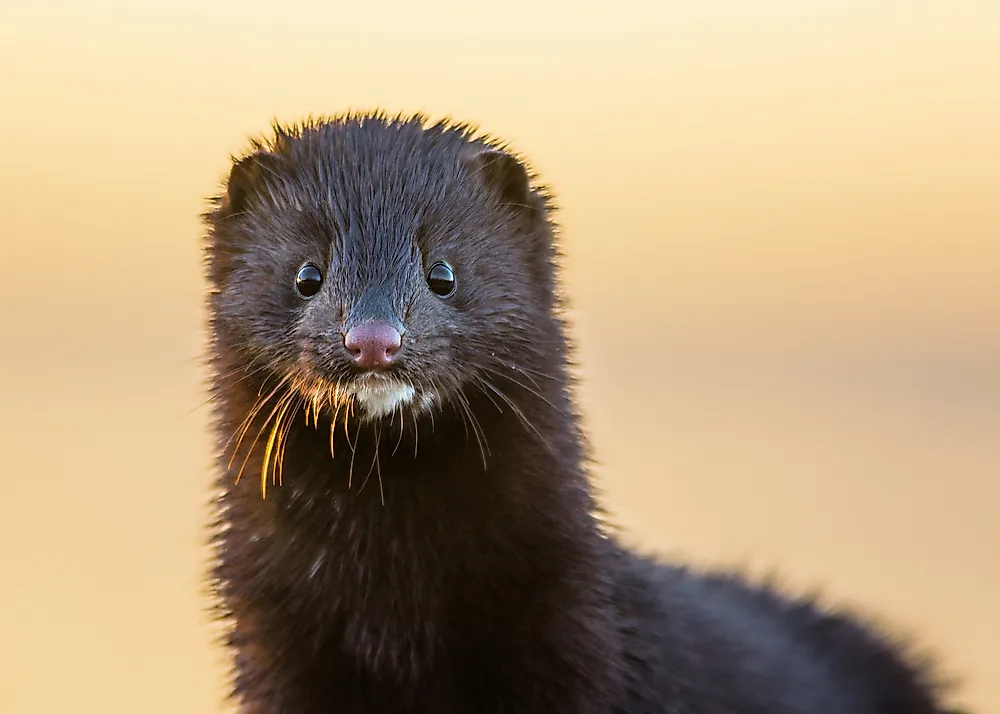Poland's Most Threatened Mammals

Poland is located in Central Europe and has a total area of 120,726 square miles. It is divided into 2 distinct ecoregions: European-Mediterranean Montane Mixed Forests and Northeast Atlantic Shelf Marine. These regions are home to many plants and animals that, although extinct in other regions of Europe, continue to inhabit Poland. This article takes a look at some of the most threatened mammals in Poland.
Poland’s Most Threatened Mammals
European Mink
The European mink grows to anywhere from 13.9 inches to 16.9 inches in length and weighs between 1.21 and 1.76 pounds, depending on its sex. This species has short legs, a long body, and a long tail that help it to swim. Its diet consists of frogs, insects, fish, and aquatic vegetation. The European mink is listed on the IUCN Red List as critically endangered due to rapidly decreasing population size and range. Its population decline has been recorded since the 18th century. During the last decade, however, it has decreased by more than 50% and its range has decreased by 85%. Some of the reasons for this population and habitat loss include: overhunting, deforestation, development, invasive American mink species, and loss of food source. Several countries have ongoing conservation breeding programs.
Wisent
The wisent, or European bison, is the largest land mammal in Europe, reaching heights of between 5.2 and 6.4 feet and weighing between 880 and 2,030 pounds. This bison species lives in herds of 8 to 13 individuals, living primarily on grass. A small herd lives in Białowieża Forest of Poland, where their diet is supplemented with hay. This species was once considered extinct, although reintroduction programs in several countries have been successful. Today, the wisent is listed as vulnerable on the IUCN Red List. Its current population size is believed to be around 1,800 with 1,000 mature individuals. Recently, this number has been growing.
Mouflon
The mouflon, also known as the Cyprian wild sheep, is recognized by its reddish-brown fur, white-colored patches along its sides, and curved horns. It can weigh as much as 110 pounds. During mating season, the males fight for dominance in order to have access to the females. It is believed that the mouflon is one of two ancestors to the domestic sheep. This species was once endemic to the island of Cyprus, although it has been introduced to several countries, including Poland. It is currently labeled as vulnerable on the IUCN Red List because its population has been declining by 30% over the last generation. This decline has been attributed to habitat loss, hunting, and hybridization with domestic sheep.
Other threatened and endangered mammals of Poland can be found in the chart published below.
Environmental Threats and Conservation Efforts
As previously mentioned, many of the mammals on this list are threatened by habitat destruction. This can occur for a number of reasons, including deforestation, urban development, agriculture, and water and air pollution. In order to reverse the effects of deforestation, the government of Poland has initiated a reforestation program with the intention of increasing forest coverage from the current 30.5% to 33% by 2050. Approximately 1,214 square miles of this country’s total area is protected as national park land. Additionally, various wetlands and coastal regions are also protected for conservation purposes.
Poland's Most Threatened Mammals
| Poland's Most Threatened Mammals | Scientific Name |
|---|---|
| European Mink | Mustela lutreola |
| Wisent | Bison bonasus |
| Mouflon | Ovis musimon |
| Harbor Porpoise | Phocoena phocoena |
| Barbastelle | Barbastella barbastellus |
| Geoffroy's Bat | Myotis emarginatus |
| Pond Bat | Myotis dasycneme |
| Bechstein's Bat | Myotis bechsteinii |
| Garden Dormouse | Eliomys quercinus |
| Speckled Ground Squirrel | Spermophilus suslicus |
| European Ground Squirrel | Spermophilus citellus |











